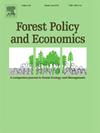挪威木质建筑行业的能力需求
IF 3.8
2区 农林科学
Q1 ECONOMICS
引用次数: 0
摘要
挪威木材工业正在向绿色经济转型。本研究调查了木材行业不断变化的能力需求,以及这些变化如何影响招聘。我们分析了从2012年到2022年共497份招聘广告,以确定对不同能力的需求。总的来说,招聘广告的规模增加了两倍,包括对不同能力类型的要求增加了。我们发现,在2012年和2022年的招聘广告中,对技术能力的要求一直很高,但从2022年起,团队合作、灵活性、写作和口语能力等通用技能在招聘广告中得到了更多的重视。环境意识和承诺是需要的新型能力,以及关于可持续原材料和资源的知识。该行业在招聘合格人才方面也面临挑战,尤其是那些拥有职业文凭的人才。因此,公司调整了他们的招聘策略,软化了广告中对正式能力的要求,提供了更多的在职培训机会。公司的目标是通过整合职业专业知识来提高竞争力和创新能力,但经营压力往往压倒了他们,导致新能力的不优先考虑。木材工业正在积极准备绿色过渡,吸引和留住具有必要技能和态度的人才,并提供在职培训,以确保必要的技术专门知识。本文章由计算机程序翻译,如有差异,请以英文原文为准。
Competence needs in the wood-based construction industry in Norway
The Norwegian wood industry is transitioning towards a greener economy. This study investigates the changing competence needs in the wood industry and how these changes affect recruitment. We analyze a total of 497 job advertisements from 2012 to 2022 to identify the demand for different competencies. In general, the job ads had tripled their size, including an increase in the number of different competence types required. We find a consistent high demand for technical competences across a high share of the job ads in both 2012 and 2022, but generic skills, such as teamwork, flexibility and writing and speaking skills are given more weight in the ads from 2022. Environmental awareness and commitment are new types of competences in demand, as well as knowledge on sustainable raw materials and resources. The industry also faces challenges in recruiting qualified personnel, particularly those with vocational diplomas. Companies thus adapt their recruitment strategies, by softening the formal competence requirements in the ads and offering more on-the-job training opportunities. Firms aim to enhance competitiveness and innovation by incorporating vocational expertise, but operational pressures often overtake them, leading to the deprioritization of new competencies. The wood industry is actively preparing for a green transition by attracting and retaining talent with necessary skills and attitudes and providing on-the-job training to secure the necessary technical expertise.
求助全文
通过发布文献求助,成功后即可免费获取论文全文。
去求助
来源期刊

Forest Policy and Economics
农林科学-林学
CiteScore
9.00
自引率
7.50%
发文量
148
审稿时长
21.9 weeks
期刊介绍:
Forest Policy and Economics is a leading scientific journal that publishes peer-reviewed policy and economics research relating to forests, forested landscapes, forest-related industries, and other forest-relevant land uses. It also welcomes contributions from other social sciences and humanities perspectives that make clear theoretical, conceptual and methodological contributions to the existing state-of-the-art literature on forests and related land use systems. These disciplines include, but are not limited to, sociology, anthropology, human geography, history, jurisprudence, planning, development studies, and psychology research on forests. Forest Policy and Economics is global in scope and publishes multiple article types of high scientific standard. Acceptance for publication is subject to a double-blind peer-review process.
 求助内容:
求助内容: 应助结果提醒方式:
应助结果提醒方式:


